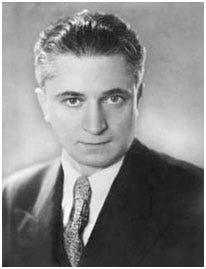While historians too often focus on the biography of great men or the study of critical junctures, Fernand Braudel, a French historian, published from 1963 to 1979 a three volume analysis of material conditions over centuries.
We look here in the first part, the demographic evolution from the 16th century.
World population
The estimate of the population in 1600 is the subject of uncertainties, political manipulation and teleological interpretation. The goal may be to maximize or minimize the genocidal impact of colonizations. Minimized in an often ethnocentric vision of the civilizational development of manifest destiny and colonialism of the 19th century, maximized with the decolonizing point of view which appeared between the two wars and became dominant after WWII.
The dynamism of European population until 1900 is often attributed to two factors of civilizational progress: the progress of medicine and of hygiene.
However, Asia has seen an increase comparable to the West in the 11th to 12th century AD, in less sanitary conditions. Braudel describes the displacement of the Malthusian limit.
According to Braudel agricultural productivity leads population growth. This depends mainly on cereal culture techniques for any given territory.
Agricultural productivity
Each cereal has different implications on development:
In Europe, wheat is the main source of calorie. France sees an increase in productivity of 3 grains per 1 sowed in 1200 to 6 in 1800, the most advanced countries, England and Holland reach 10. Cereals represent 50% to 75% of the caloric contribution and more because some Italian workers eat a big bread which is accompanied by a tomato or an onion. The three-year crop rotation leads to the production of fodder plants. The peasants use ox and horse to pull the plow, the manure provides fertilizer. Europe took centuries to optimize wheat cultivation.
In Asia, rice is the main cultivar, with 7. 3e6 Cal/ha, against 1. 5E6 for wheat and 3.4e5 for meat cattle. Major hydraulic works strengthen administrative development four centuries before JC. It is only between the 11th and 12th century AD that a rice variety allowing two harvests per year is introduced. Productivity is such that animals are no longer used, practically all the work is done by men. Domestic waste from cities and human excrement is used as fertilizers, this causes stench in cities and surrounding area. The evolution of the 12th century accelerated with the introduction of the sweet potato and corn from America by the Spaniards.
In America, corn is the staple of Inca, Maya and Aztec civilizations. Corn produces many grains, it produces 70 plant grains in the arid zone, and 10 times more in the most favorable areas. Another specificity is that it only requires 50 days of work per year. What is one to do with idle peasants? Braudel notes that these societies have developed theocratic regimes that organized grandiose architecture works, with pyramid temples and cyclopean masonry walls.
High energy Civilization
As Braudel explains, the evolution of agricultural techniques determines the population of nations before the 19th century and the advent of the industrial revolution and what Boyden (and now Jancovici) calls high energy civilization.
Note that in the 18th century, the construction of infrastructure (roads, canals, windmills) intensified under the effect of a European competition and above all, as John Darwin points out, of a race for the production of England with its colonies. Even without technical progress, infrastructure that could have been implemented in the era of Archimedes is finally set up in Europe.
Liberal capitalism then encourages competition and innovation and leads the industrial revolution. Scientific and technological development is intensifying. It is only then that the progress of medicine causes the demographic explosion of Europe and then after 1950 of the under-developed countries described by Alfred Sauvy.
Challenges of governance: the 18th and 21st century
Most historical developments follow the discovery of new techniques. The exception seems to be the capitalist revolution in the 18th century which imposed better application in Europe of known techniques and a loss of status for conservative landowners in favor of merchants and entrepreneurs because of a commercial competition of Europe with India and China.
Whole countries can lose status: Spain has not entered the race for productivity against England in the 18th century, its elite dissipated its colonial rent in an irrational policy of construction of superb cathedrals and monasteries, perhaps to better legitimize the divine right monarchic regime and perpetuate the social status quo.
The 21st century European program of Energie Wende (energy transition) appears as another case where the political will precedes the technology. Germany wants to engage Europe in a less efficient production policy and investment for energy saving at any costs. This seems motivated by a feeling of diffuse guilt and luxury belief in degrowth. This could increase the desertification of the European industrial fabric.
The problem is that there is no accepted criterion of success for the energy transition. Unlike the competition for productivity of the 18th century industrial revolution, it is an irrational policy in the sense of Burnham.





